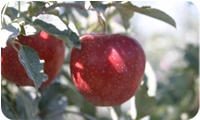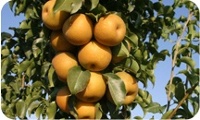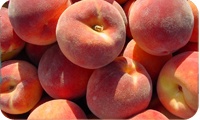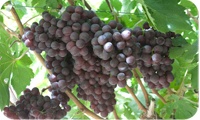History of Idaho Fruit Industry and the Idaho State Horticultural Society and Constitution

The Idaho fruit industry has a relatively long history. Although most of today’s fruit-producing areas are located in the south western counties of Idaho, Lewiston area was the first location that Idaho fruit industry started to form. Detailed history of fruit production and Idaho State Horticultural Society has been written by Mr. Ron Marlow of Payette Idaho and are using most of his article for this portion of our website.
First records of fruit growing in the Pacific Northwest were recorded at Vancouver, Washington in 1826. The Hudson's Bay Company supplied bud stocks that produced orchards. Rev. H. H. Spalding planted apple seeds, in 1837, at Lapwai, Idaho which grew into trees that bore fruit for many years. His irrigation system watered these trees as well as his potato patch.
Hawley's 1899 "History of Idaho" notes that W. Mulkey, of Lewiston, set out the first commercial orchard at 15 acres, in 1863, which produced apples and pears. These crops were sold in nearby mining camps. Soon Lewiston and Clarkston had about 6000 acres of cherries, apples, pears, peaches, prunes and almonds. The Lewiston area became known as Lewiston Orchards.
Prior to 1900 most of the Idaho's fruit was raised in Latah County with apples and prunes the common crops. With the population shift to Southern Idaho the fruit orchards increased also. In the Snake River Canyon, near Twin Falls, Ira Burton Perrine planted apples, peaches, prunes and apricots. They were soon known all over the world for the excellence. East of St. Anthony, in Eastern Idaho, big orchards were set out but early frosts took their toll.
Idaho's fruit grew in popularity in eastern markets but was a long way from population centers. Shipping costs took a large portion of the profits.
In January 1895, an Idaho State Horticultural Society was formed to promote horticultural interest in Idaho. One of their first priorities was to get a law passed requiring inspection of fruit trees and a fine for people selling diseased fruit or trees. John Toole was elected the first president. A State Board of Horticultural Inspection was created by the State Legislature with W. A. Coughanour, of Payette, as president.
The state was divided into seven horticultural districts. more...
Idaho Climate for Fruit Production
Idaho's climate is well adapted to the commercial and home production of selected fruit crops. Suitability of a particular crop, however, depends on the region.
Southwestern Idaho including Canyon, Payette, Gem, and Owahee counties have relatively mild climate, warm summers and a long growing season. These area supports commercial apple, cherry, plum, peach, table grape, wine grape, raspberry and strawberry production.
The Lewiston and Orofino areas along the Clearwater River drainage also enjoy a mild climate and long growing season. The same crops that do well in Boise typically do well in this area, although varieties are more limited.
Southeastern Idaho has a cool, short growing season and cold winters. Raspberries, strawberries, currants, gooseberries, apples and some pears and plums can be grown here. Blueberries can be grown in some locations where acidic soil are found or can be created.
Northern and central Idaho are mountainous and have highly variable climates, depending on elevation. Choose cold hardy, early ripening crops here. Raspberries, blueberries, strawberries, currants, gooseberries, saskatoons, haskaps, apples, pears and European plums usually perform well in this region. Bonner County is the home of several commercial blueberry growers and market gardeners throughout the region produce a wide variety of berries and home fruits. The hillsides are covered with mountain huckleberry, Idaho's state fruit, and huckleberry processors and marketers can be found throughout the region.
Climatic coinditions in the southwestern region is favorable for production of high quality fruit with outstanding flavor. The region has a typical four seasons with about 10-12 inches of parcipitation. Minumum winter tempertures can range from minus 8 to plus 8 F, although some years they can plung down to minus 20 F. The region enjoys a gradual warming in the spring, allowing for a good fruit set for most decidious fruits. Warm and long summer days and cool nights during maturation prodive excellent conditions for fruit color fomation and flavor preservation. more...










